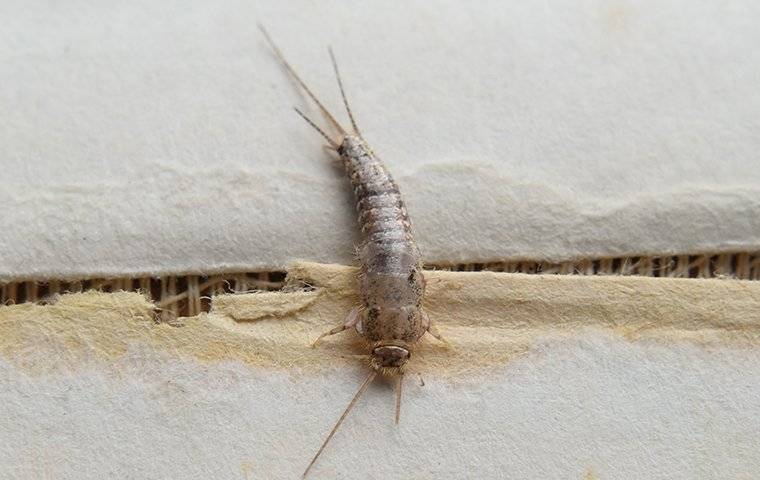Do you know how to identify a silverfish? If not, there are a few characteristics to look for. Silverfish are ¾ of an inch long or less and have a silver or brown coloration. They are a teardrop shape, like a catfish, but that isn't the only reason they're called silverfish. They have a shiny, fish-like sheen that can catch the light as these insects crawl over things. But rather than bending to each side, like a fish, it bends up and down. Another defining feature to look for is the three appendages on the end of its tail. If you find silverfish inside your Sumter home, it can be frustrating, especially if you know how destructive silverfish can be.
Natural Protection From Silverfish
A silverfish has a waxy coating that helps it hold moisture in its body. Without this coating, the silverfish would dry up and die. This coating has another benefit as well. It helps to protect silverfish from pesticides. If you spray something toxic to kill silverfish, you won't have much success. You may only succeed in making yourself, and others in your home, sick. Silverfish are highly tolerant of conventional treatments.
Silverfish Small, Enclosed Spaces
Silverfish are the opposite of claustrophobic. They prefer to be squeezed into tight spaces where they can feel hard surfaces touching them on all sides. When they get into your home, they'll hide in gaps and crevices where it is difficult to see them or apply products to control them.
Silverfish Eat A Variety Of Foods
Sometimes it is possible to hide food and starve pests out of your home. Good luck starving a silverfish. They eat paste, moist paper, silk, glue, shampoo, starchy pantry foods, dead insects, and even their own shed exoskeletons.
Traps Are Only Partially Successful
Some homeowners attempt to use silverfish traps to get rid of silverfish. While many traps work to catch silverfish and it is possible to trap some silverfish, this is only a partial solution. It must be integrated with a larger strategy of control or you will continue to have a silverfish problem. Using traps can reduce the silverfish population in your home and have a limited impact, but you need to understand that traps aren't likely to get them all. Even if they could, more silverfish are just going to come into your home to replace the ones you've removed. Traps are just not a complete solution.
How To Manage Silverfish In Your Sumter Home On
While it is difficult to get rid of silverfish, you can have some impact on these insects by taking a few preventative measures.
- Install dehumidifiers and fans in damp or humid locations within your home. This will dry these areas out and make them less habitable for silverfish. It will also work to reduce preferred food options, such as moist cardboard, paper, and wallpaper.
- Around the outside of your home, remove objects that are near your exterior. These provide moisture, shade, and tight spaces for silverfish to flourish in.
- Remove leaves, grass clippings, and other organic material near your foundation wall and under exterior structures.
- Seal any gaps, crack, or holes you see in your foundation wall or exterior.
- Make sure your gutters are clean and in good repair.
How To Eliminate Silverfish From Your Sumter Home
Exterminating silverfish is less about one particular method or product, and more about a systematic approach that includes inspections, pest monitoring, appropriate treatments, and exclusions. At Sumter Pest Management, we provide one-time service, or ongoing pest control service for the elimination and control of silverfish. Our licensed pest management professionals use the Integrated Pest Management approach to diagnose silverfish problems and use a combination of control products and strategies to arrest infestations with the least amount of chemical products. When this process is performed by a trained and experienced professional, silverfish can be eliminated and your belongings can be protected. Reach out to us today to learn more about our silverfish or other pest control options.


